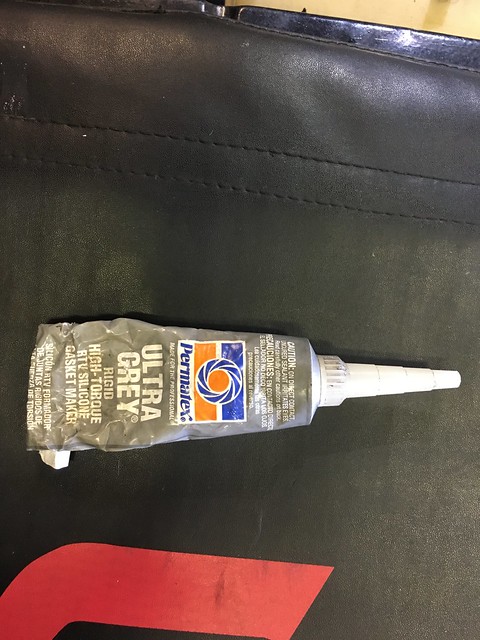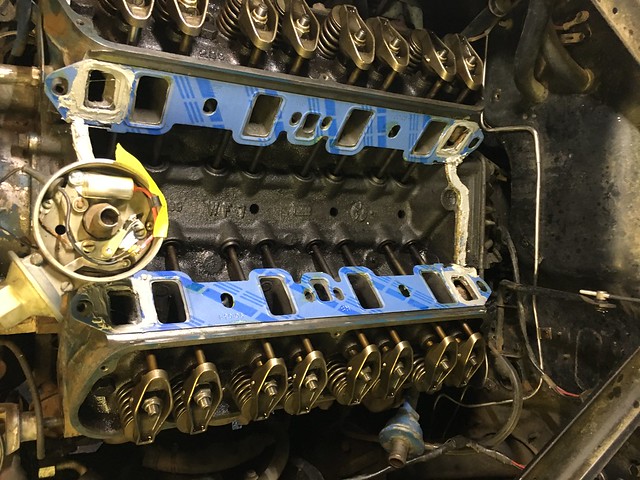It’s been a couple of those days where there is a point where it’s not
fun. There are issues with four fasteners that have thrown a wrench into
the works. The intake manifold had to come off to replace a bolt on the
thermostat housing. One of the valve cover bolts snapped off in the head
on reassembly. Two of the threaded bosses in the timing chain cover
failed when the water pump bolts were removed. Here’s how we got
there…
I’ve had some firsts on this build. First Mustang, first car 50 + years
old, first SBF V8 and first time I’ve had to chisel rat dung that was
crusted into the intake manifold. No. Really. I removed the manifold and
were preparing the surfaces and cleaning it up a bit. Under the choke
there was something that was rock hard. I poked it with pick, no go.
With a striking pry bar and holy cow it’s about 1/8″-1/4″ of petrified
rat dung. With some acorns hardened into it. So that happened.

The manifold and head faces need to be prepped. I’m using Scotchbrite
bristle and maroon finishing pads. It’s pretty dirty so each side is
covered and masked off with towels in the ports so the chunks don’t end
up down there.

With a bit of work (the die grinder and pad really did most of the work)
the surfaces are ready to go.

I use acetone to clean the surfaces prior to attaching the gaskets and
sealer. Don’t you hate having to open the can, dab the rag and repeat? I
do too so I use a pump can. I started doing this some years back on fab
projects, cages, chassis, suspensions where the weld joint needs to be
cleaned prior to welding. Just push down a couple of times with your rag
on top and you’re set to wipe.

I’ve been using Gaskacinch for years to set gaskets and seal them. It’s
basically engine contact cement.

For additional sealing on this one I’m using another old standby,
Permatex Ultra Gray. Depending on the joint I use the gray, Ultra Black
(very sticky) and the red hi temp RTV. The gray works great for intake
and cooling apps.

I set the main gaskets with Gaskacinch and line the end gaskets and
around the water jackets for some extra protection. In this case the
Fel-Pro gaskets are installed with the crush zone up (you’ll be able to
read the printing on them).

The existing hardware has been wire wheeled, cleaned and buffed with the
holes chased and cleaned. Prior to install a light coating of engine oil
is applied to the threads. It helps with seating and provides a bit of
lube during torque.

The thermostat housing is reinstalled with a new thermostat and gasket.
Remember this entire exercise of removing the manifold is because one of
the bolts had a stripped head. The outlet needed quite a bit of work.
The bypass was severely restricted and needed to be clearanced.


The manifold is heavy. Even without the carb. The FSM has a diagram for
some alignment tools so you don’t hose the gaskets on the install. I
used some all thread to align the manifold. It doesn’t make it any
lighter but it makes it easier align.


Now we do a two step torque following the sequence and specs in the FSM.
The first step is to 14 ft/lbs, the second to 21 ft/lbs.

There was some angst installing the water pump. Up next, what happened
to the timing chain cover and what I’m doing to work past it.
